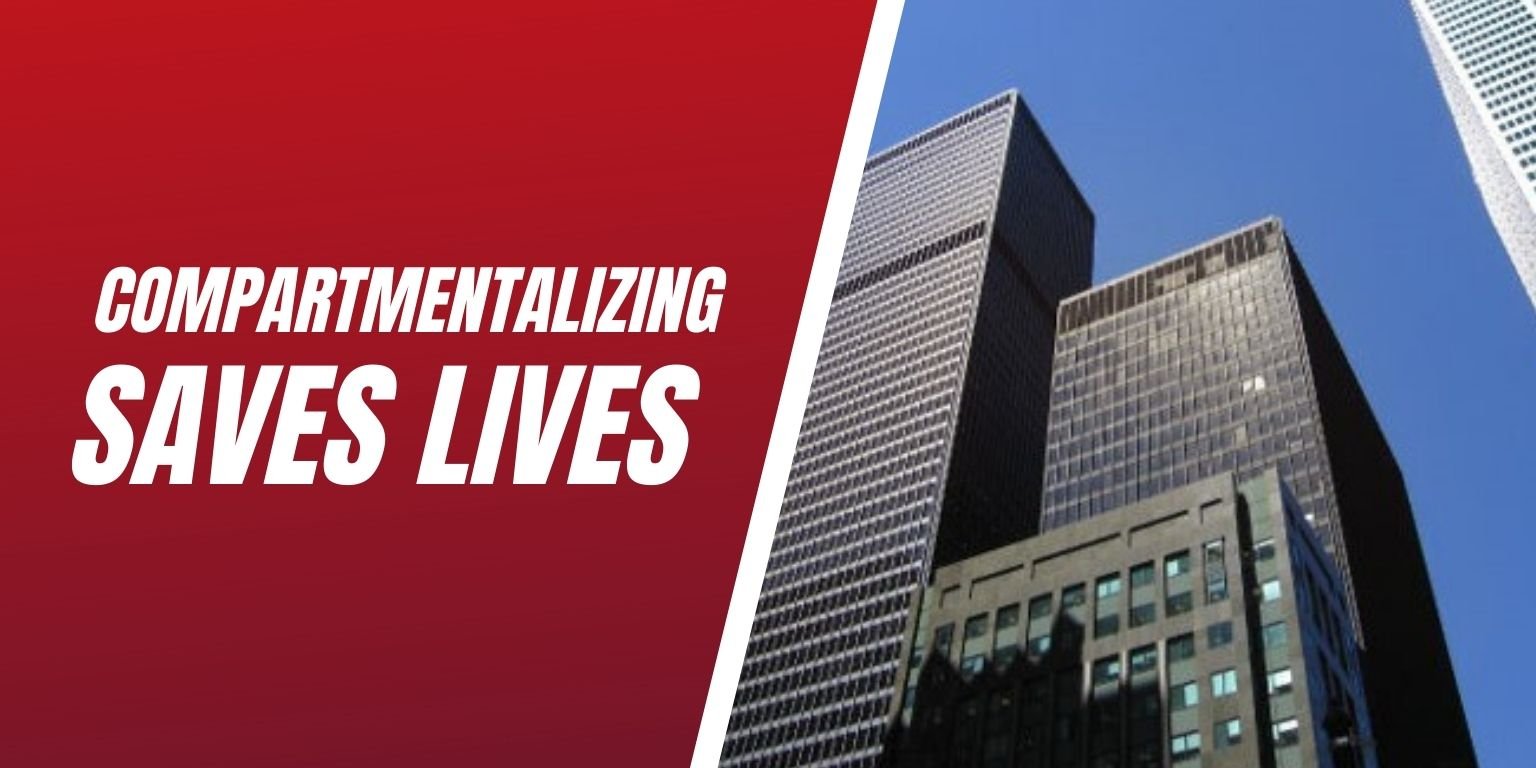
Compartmentalizing a building is a life saving fire safety strategy that should never be overlooked. There are a variety of fire safety features within a building that assist in compartmentalizing areas in the event of a fire. When lives are at stake during an emergency, not only do all safety measures need to be in place but operating efficiently.
Compartmentalizing is the process of dividing a building into sections with the ability to seclude itself from the rest of the building in the event of a fire emergency. This allows the fire and smoke to remain in the area of origin. Fire and smoke can take over a building in the blink of an eye, which increases the critical need for passive fire systems to be in place and most importantly, functioning properly.
Fire and smoke dampers, fire doors, fire walls, fire partitions and smoke barriers are among the various ways of preventing the spread of fire and smoke through compartmentalization. Passive fire protection systems allow more time occupants to evacuate and for rescue crews to secure the building.
Fire and Smoke Dampers
Fire dampers assist in the efforts of compartmentalizing a building by restricting fire where ducts and air transfer openings penetrate firewalls, fire barriers, fire partitions, horizontal assemblies and shaft enclosures. There are two types of fire dampers utilized: Dynamic fire dampers and Static fire dampers. Building codes will indicate where fire dampers are required throughout the facility.
Fire Damper - NFPA 80 – Section 19.4
Each damper shall be tested and inspected one year after installation.
The test and inspection frequency shall then be every 4 years, except in hospitals, where the frequency shall be 6 years.
Smoke dampers restricts the passing of smoke where ducts and air transfer openings penetrate assemblies. Typically operated by a smoke detector, once smoke is detected it will send a signal to the damper actuator, which uses the jackshaft and linkage to open and close the smoke damper blades. There are a variety of smoke dampers that can be found within your passive fire protection system. Such as, combination dampers, ceiling radiation dampers and corridor dampers.
Smoke Damper - NFPA 105 – Section 6.5
Each damper shall be tested and inspected one year after installation.
The test and inspection frequency shall then be every 4 years, except in hospitals, where the frequency shall be 6 years.
Fire Doors
Fire doors is another critical component of your passive fire protection system as they prevent fire and smoke from spreading throughout a building. Fire doors are complex devices, so regular inspection and maintenance is required to ensure compliance and functionality. In order for fire doors to be effective in the event of a fire, they must be closed shut at all times. This will ensure the fire door compartmentalization strategy will be operative.
NFPA 80, Section 5.2.4.2: states that, as a minimum, the following items must be verified:
- No open holes or breaks exist in surfaces of either the door or frame.
- Glazing, vision light frames & glazing beads are intact and securely fastened in place, if so equipped.
- The door, frame, hinges, hardware, and noncombustible threshold are secured, aligned, and in working order with no visible signs of damage.
- No parts are missing or broken.
- Door clearances at the door edge of the door frame, on the pull side of the door, do not exceed clearances listed in 4.8.4 (the clearance under the bottom of the door shall be a maximum of 3/4″) and 6.3.1 (top & edges 1/8″).
- The self-closing device is operational; that is, the active door completely closes when operated from the full open position.
- If a coordinator is installed, the inactive leaf closes before the active leaf.
- Latching hardware operates and secures the door when it is in the closed position.
- Auxiliary hardware items that interfere or prohibit operation are not installed on the door or frame.
- No field modifications to the door assembly have been performed that void the label.
- Gasketing and edge seals, where required, are inspected to verify their presence and integrity.
Firewalls
Firewalls are exterior fire-resistance-rated walls that is designed to compartmentalize a fire within the area of origin. According to the International Building Code, firewalls extend continuously from the base of the building all the way to the roof. They are built with significant structural stability under fire conditions, which allows for fire walls to remain standing if the rest of the construction were to collapse. Firewalls have a three-to-four-hour fire resistance rating.
Fire Partitions
Fire partitions are vertical interior walls that divide a particular area (compartmentalize) within a building. These walls extend from the floor only to the ceiling with a one-to-two-hour fire resistance rating.
Smoke Barriers
Smoke barriers are constructed to restrict the passage of smoke in the event of a fire. These barriers can be vertical or horizontal, consisting of a minimum one-hour fire resistance rating.
The process of compartmentalizing a building is a thorough strategy intended to help save lives in the event of a fire. Compartmentalizing a building gives those inside more time to safely evacuate and allow first responders to do their job safely as well.
The fire safety systems discussed above need to have proper inspection and maintenance to ensure functionality. Fires can break-out at any given time so it is critical to stay on top of code requirements and deadlines. LSS Life Safety Services is ready to partner with you to ensure facility safety and compliance.
Contact Us Here or call 888-675-4519

